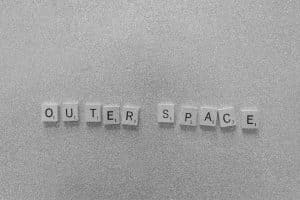Wrongful Convictions: Facial Recognition Re-Examinations
In recent years, there has been a growing concern surrounding the use of facial recognition technology in the criminal justice system. While its proponents argue that it can help identify and convict criminals, others have raised the alarm about its potential for error and racial bias. And in cases of wrongful convictions, where innocent individuals are sent to prison for crimes they did not commit, the stakes are even higher. This has led to a call for re-examinations of facial recognition evidence in these cases. In this article, we will explore the issue of wrongful convictions and the role of facial recognition re-examinations in ensuring justice is served.
The Issue of Wrongful Convictions
Wrongful convictions occur when individuals are found guilty of a crime they did not commit. The reasons for these miscarriages of justice can vary, from coerced confessions to eyewitness misidentification. The consequences of these mistakes are severe, not only for the innocent individual who is wrongfully imprisoned but also for the victim of the actual crime who is denied justice.
According to a report by the National Registry of Exonerations, there have been over 2,700 wrongful convictions since 1989 in the United States. And with the advancement of technology, specifically facial recognition, there is a growing concern that this number could increase.
The Role of Facial Recognition in Wrongful Convictions
Facial recognition technology uses algorithms to match facial features from photographs or videos to a database of images. Its use in law enforcement has become increasingly prevalent, with some estimates suggesting that over half of all American adults are in a police facial recognition network.
While it is marketed as a tool to aid in investigations and identify criminals, facial recognition technology has come under scrutiny for its potential for error and bias. Studies have shown that the accuracy of facial recognition systems can vary based on factors such as race and gender, with higher error rates for people of color and women.
In cases of wrongful convictions, facial recognition evidence can play a crucial role in identifying a suspect. However, its potential for error and bias could lead to the wrongful conviction of an innocent individual. This has led to a growing demand for re-examinations of facial recognition evidence in these cases.
The Need for Facial Recognition Re-Examinations
Facial recognition re-examinations involve the review of the evidence used in a conviction, specifically the facial recognition algorithm and database. This can help uncover any potential errors or bias that may have led to a wrongful conviction.
In some cases, the use of facial recognition evidence may have been the main or only evidence used to convict an individual. In these situations, a re-examination of the evidence can help determine the reliability and accuracy of the technology used. It can also help identify any flaws in the technology that may have resulted in a wrong identification.
The Case of Robert Williams
One example of a wrongful conviction case that was re-examined due to facial recognition evidence is that of Robert Williams. In 2020, Williams became the first known person to be wrongfully arrested based on a facial recognition algorithm. After a facial recognition match linked him to a shoplifting incident, Williams was arrested and jailed for 30 hours before being released. His case shed light on the dangers of relying solely on facial recognition technology and the need for safeguards such as re-examinations.
The Future of Re-Examinations
As more cases of wrongful convictions are brought to light, the need for regular and thorough re-examinations of facial recognition evidence is becoming increasingly clear. In some jurisdictions, laws have been passed requiring the disclosure of facial recognition evidence in criminal cases. This has been met with resistance from law enforcement agencies, citing the potential risk of exposing their investigative methods.
However, the importance of ensuring justice for all, including the wrongfully convicted, outweighs any concerns about protecting investigative methods. Regular re-examinations can help prevent miscarriages of justice and uphold the integrity of the criminal justice system.
Conclusion
The use of facial recognition technology in the criminal justice system has raised many concerns, particularly in cases of wrongful convictions. Re-examinations of facial recognition evidence can not only help prevent these miscarriages of justice but also shed light on any flaws or biases in the technology. As we continue to rely on technology in our pursuit of justice, it is imperative that we have safeguards in place to ensure that innocent individuals are not wrongfully punished.










